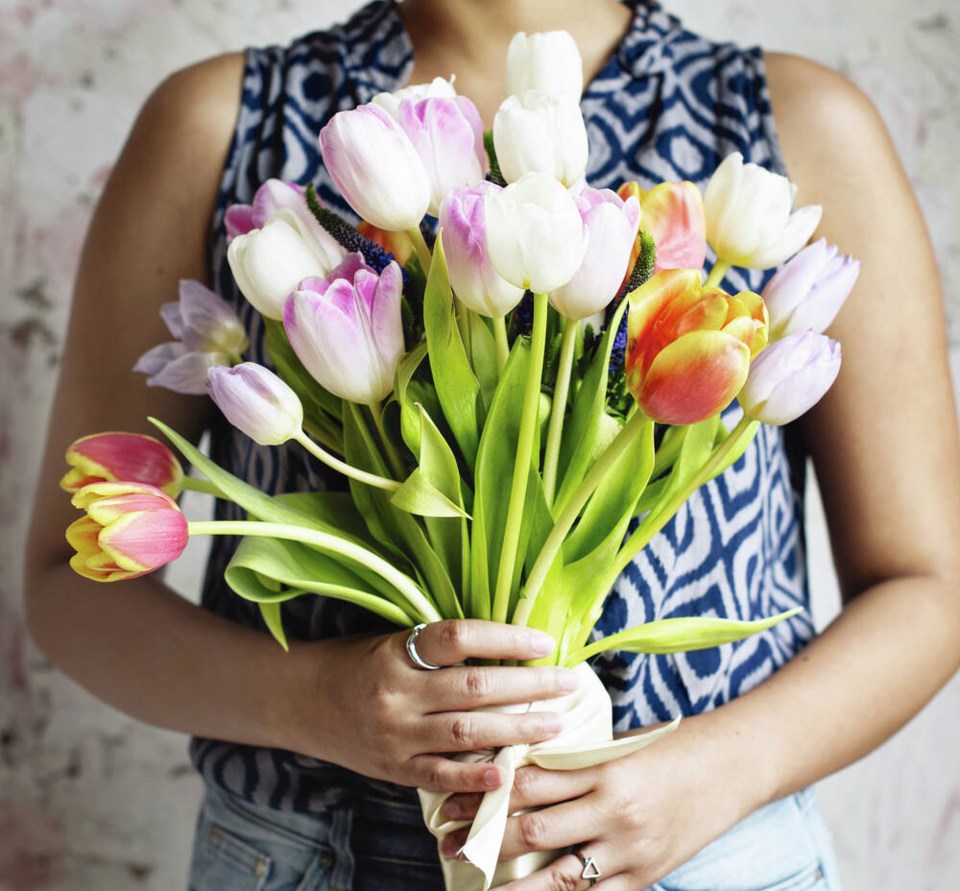Mother’s Day is one of the most important dates on the calendar and we celebrate it because we love and appreciate mom, and because above all else we do not want her to cry ohhhhhhh no, please stop crying, of course I didn’t forget your special day, the flowers should arrive very, very soon!
Sorry, where was I? Ah yes: In Canada we celebrate Mother’s Day on the second Sunday in May, which is timed to coincide with nothing much at all to help you remember when it is.
Like every man I know who regularly forgets certain important dates on the calendar, I am thankful that many people of the female persuasion consider flowers to be a legitimate gift.
Still, I can’t help but think that flowers are a sign of giving up. I mean, flowers? Flowers clearly indicate that you have absolutely no idea what to buy, do or say to mark an occasion, so you “say it with flowers” because that’s what all the advertising tells you to do.
Also, on many of these important dates there is a certain expectation from the party-of-the-second-part that never includes perfectly reasonable items such as
a) a gift certificate from the liquor store;
b) a gift certificate from the hardware store; or
c) alcohol and tools.
Looking at the glass as half-full: Yes, you really can get away with just sending flowers on Mother’s Day. And not only that, you can send flowers for almost any important date on the calendar!
From years of experience, my choice of which bunch of flowers to buy for what person on which occasion is based on a complex decision-making algorithm composed of variables and carrying-the-two and whatnot, but really comes down to this: I buy the least-expensive option available that doesn’t make me look like I am basing my decision on the least-expensive option available.
This is not at all what happened back in the Victorian era, when flower choice was more a statement of mood and intention. These things are not what modern men typically put a lot of thought into, because we only have a handful of moods (hungry, confused and the other one) and intentions (sports, lawn care and the other one).
All this flower-buying business began in 1717, with the wife of the British ambassador to Constantinople or possibly, Istanbul, not Constantinople. Either way I apologize for putting that song into your head for the rest of the week.
Anyway, Lady Wortley Montagu, a prolific letter writer, wrote back to the Motherland about her experiences in the Ottoman capital, describing in detail how the women of the Sultan’s harem communicated with the outside world through a flower code called “selam,” in Turkish. I swear I’m not making any of this up.
Her exotic accounts found an audience in England, and with it came popular acceptance of using flowers as a form of secret billet-doux. (Note: this just means “love letters.” The English often use French words for potentially naughty things, such as “baguette” and “discotheque.”)
In the Victorian age, the hidden messages of the secret flower code were consolidated into encyclopedic form. One of the earliest was Le langage des fleurs (more naughty French) compiled by Louise Cortambert under the nom-de-plume (ha!) Madame Charlotte de la Tour.
By this point, flowers had become a popular method of communication, demonstrating sentiments ranging from “I love you,” to “I like you, but only as a friend,” to “You’ll be hearing from my legal team.”
Flowers played a vital role in how the English made their feelings known before the invention of sarcasm and the 68-pounder Lancaster gun.
For example, to compliment someone on her wit and to generally send good wishes, an arrangement of lupins, hollyhocks, white heather, and ragged robin was appropriate.
On the other hand, delphiniums conveyed the notion that you thought her haughty, and hydrangea: heartless.
If you added a little basil in there, it meant hate! This might produce a reply bouquet of oleander and birdsfoot trefoil, meaning: beware my revenge.
At no time should you believe that I or any man you know could identify birdsfoot trefoil, or the other flowers named above, except maybe for basil, which is more Thai food than sentiment. Unless you count Thai food as a sentiment, which we do.
However, by 1819, Le langage des fleurs was a bestseller, and hugely influential in Europe and her colonies, creating the cottage industry of Confused Men Who Know Not What To Buy, which is still a strong contributor to the economy.
Speaking of today, modern technology has helped us a little. Many men now use emojis to communicate our deepest feelings about certain people on important dates on the calendar. The appeal is that emojis are simpler and more expressive, especially if you can find the eggplant one on the text menu.
Of course, there are times that one must resort to flowers, such as when you can’t find, or it is otherwise inappropriate, to send the eggplant emoji.
If you are a person of the man persuasion, you may have skipped down to this last paragraph so as to get to the point and have more time for scratching and thinking about alcohol and tools.
The point is: MOTHER’S DAY IS NEXT WEEK!
Buy her flowers. Neither you nor I know what they mean, but we can still say-it-with-flowers: I love you mom.
>>> To comment on this article, write a letter to the editor: [email protected]



